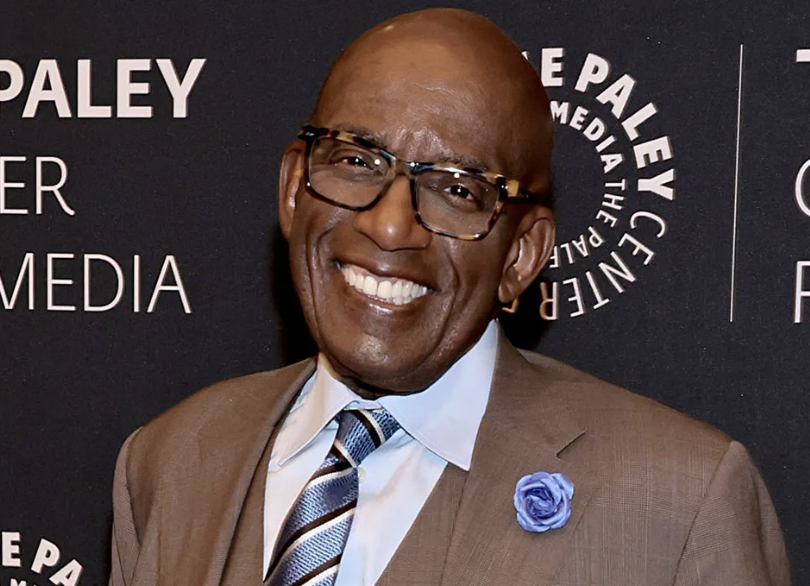A dangerous scam using AI-generated deepfake videos has emerged, falsely portraying Al Roker promoting a fake hypertension cure. This alarming deception highlights the growing threat of AI-powered fraud, potentially misleading millions. Learn how to protect yourself from this sophisticated scam and stay ahead of digital fraudsters.

Image: Getty Images
The Rise of AI-Powered Scams
Technology has evolved significantly, bringing numerous benefits, but also introducing new risks. One of the most alarming dangers today is the rise of AI-generated scams, specifically deepfake technology. Deepfakes use artificial intelligence to create hyper-realistic videos and images of real people, making it nearly impossible to distinguish between what is real and what is fabricated. This technology is now being exploited by scammers, and even trusted public figures like Al Roker have become targets.

Image: Getty Images
Al Roker’s Image Exploited in a Fraudulent Video
Recently, TV personality and meteorologist Al Roker was shocked to discover that his likeness had been used in a deepfake video to promote a hypertension cure he never endorsed. The video falsely claimed that Roker had suffered multiple heart attacks and had found a miraculous cure for high blood pressure.

Image: Getty Images
Roker addressed the issue publicly, warning viewers that he had never experienced such medical conditions and had no affiliation with the product being advertised. The scam not only misleads people into purchasing fraudulent treatments but also undermines trust in digital content, making it more difficult to differentiate between genuine endorsements and deceptive marketing.
How These Scams Operate
Scammers use advanced AI programs to generate fake videos where celebrities and public figures appear to endorse products or services. These fraudulent videos are often distributed through social media platforms, websites, and email campaigns, targeting unsuspecting individuals who trust familiar faces. Here’s how they typically operate:

Image: Getty Images
- Video Manipulation: AI-powered tools take real footage of a public figure and alter their facial movements and voice to make it appear as if they are saying something they never actually said.
- Social Media Ads and Spam: Once the video is created, it is circulated on social media through paid advertisements or fake news articles.
- Clickbait Tactics: These videos often include sensational claims to lure viewers into clicking on links that lead to fraudulent websites.
- Financial Exploitation: Victims who believe the false endorsements may purchase fake or even harmful products, losing money in the process.
The Growing Threat of Deepfake Scams

Image: Getty Images
While Al Roker is one of the latest victims of deepfake scams, he is certainly not the only one. Other celebrities, including Tom Hanks and Oprah Winfrey, have also had their identities misused in similar fraudulent campaigns. The increasing accessibility of AI-powered tools has made it easier than ever for scammers to create highly convincing deepfakes, raising concerns about the future of online misinformation.
Why Deepfake Scams Are So Dangerous
- They Exploit Trust: People are more likely to believe information when it appears to come from a trusted source.
- They Are Hard to Detect: Many deepfakes are so realistic that even experts struggle to identify them as fake.
- They Can Cause Financial and Emotional Harm: Victims may lose money, fall for medical scams, or even suffer emotional distress from believing false claims.
How to Protect Yourself from AI Scams
With AI-generated scams on the rise, it is crucial to take proactive steps to safeguard yourself and your loved ones from falling victim. Here are some essential tips:
- Verify Sources: Always check the credibility of a video before believing or sharing it. Look for official statements from the person or organization being referenced.
- Look for Inconsistencies: Deepfake videos may have unnatural facial expressions, mismatched audio, or inconsistent lighting.
- Be Wary of Sensational Claims: If a claim sounds too good to be true—such as a miraculous health cure—it likely is.
- Report Suspicious Content: If you come across a deepfake scam, report it to the social media platform or website hosting it.
- Stay Educated: Follow reliable news sources and cybersecurity experts to stay updated on the latest scam tactics.
The Role of Social Media Platforms

Image: Getty Images
Social media companies bear a significant responsibility in curbing the spread of AI-generated scams. While platforms like Facebook and YouTube have policies against deceptive content, enforcement is not always effective. Enhanced detection algorithms, stricter ad policies, and faster removal of fraudulent content are essential steps in the fight against digital deception.
Stay Vigilant and Spread Awareness
Al Roker’s deepfake scam incident serves as a stark reminder of the increasing dangers posed by AI-generated fraud. As technology advances, scammers will continue to find new ways to exploit the unsuspecting public. It is more important than ever to remain cautious, verify information, and educate others about these deceptive tactics.
Protect yourself and your loved ones by staying informed. Share this article to raise awareness and help others avoid falling victim to AI-powered scams.





